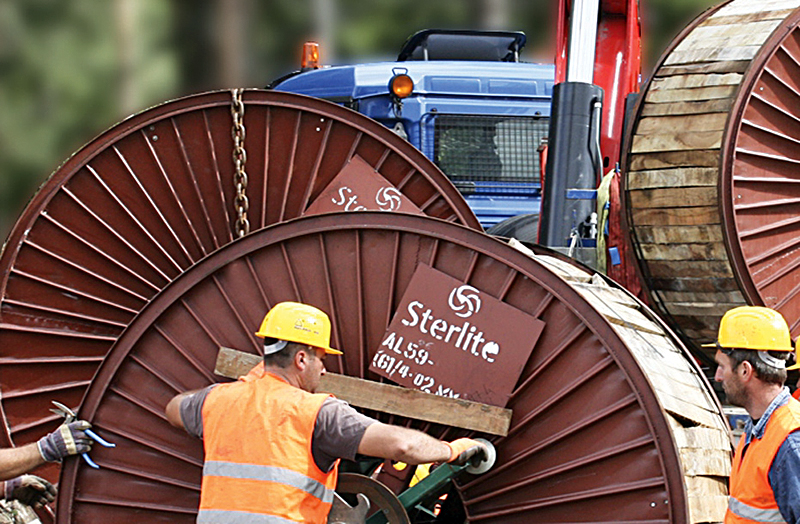
An electric power system consists of generation, transmission and distribution of electric energy. Transmission lines are used to transmit electric power to distant large load centers. Over the past few decades, the rapid growth of electric power systems has resulted in an increase in the number of lines in operation and their total length.
Further, the power transfer capability of a line depends upon the voltage and the cross section of the line conductor. The latest technological development in the design and manufacture of power line conductors makes it possible to enhance the power transfer capability by retaining the geometrical dimensions and mechanical properties of the conventional conductors or little modification.
Background
Power generation in Sweden is dominated by hydro (46% in 2010) and nuclear power (38.7%). Due to the large hydro capacity electricity generation is flexible enough to accommodate a growth of variable renewables, especially wind, though it must be considered that Sweden’s balancing capacity is a vital resource for Central Europe. In 2010, Sweden consumed 147.1 TWh (ENTSO-E 2011), i.e. approx. 15.7 MWh per inhabitant. This is the second highest consumption per capita in Europe after Finland, about 2.5 times higher than neighbouring Denmark (6.4 Mwh) and the EU average (6.2 MWh per inhabitant). In terms of electricity intensity of the economy, in 2010 Sweden ranked fourth among the EU countries with 466.2 MWh / million EUR GDP. Only Bulgaria, Estonia and Finland are more electricity-intensive than Sweden (ENTSO-E 2011, Eurostat 2011).
However, considering the development of electricity consumption over time (EEA 2010), Sweden’s consumption grew by only approx.0.5% per year from 1990 to 2007, thus performing better than any other Western European country and even better than some of the former socialist countries (which experienced a strong drop of consumption in the early 1990s).
While the cold climate is a main factor explaining the high level of electricity consumption, it must be considered that approx. 55% of Sweden’s heat consumption are covered by district heating (Euroheat 2007).
All this suggests that there still is a very large potential for reducing power consumption in Sweden, and this may be one of the easiest ways to reach the renewable electricity targets.
Further, electricity generation in Sweden is dominated by three major companies: Vattenfall, E.ON Sverige and Fortum. In 2005, these three companies (Vattenfall, Fortum and E.ON Sweden) accounted for 88% of generated electricity (EC 2007).
Sterlite’s Stellar Role
In line with the company’s mission to offer easier, faster and cost-effective solutions to utilities across the globe to build their power and telecom infrastructure, Sterlite Technologies worked very closely with Necks Electric ND Vattenfall to arrive at a solution in the form of Al59 (high ampacity) conductors for their transmission line. Al59 power conductor is an alloy conductor as per Sweden standards, which allows more power to be delivered to the transmission lines compared to the traditional alloy conductors. It is indeed a significant achievement to be part of a project that connects two power grids of Sweden and Finland.
Sterlite’s Experience
In India, Sterlite has supplied approximately 2000 km of Al59 conductor to various Indian utilities for increasing the transmission capacity & reducing the losses of the lines. Further Sterlite has supplied more than 1800 km of Al59 conductor to Scandinavian nations. Sterlite Al59 is also deployed in India’s first bipole project in 33kV.
Al59 is mainly used for new lines in order to reduce losses/transfer more power, replacing conventional conductors like ACSR/AAAC. Moreover, with the same tower loadings an Al59 conductor can carry up to 30% more than the rating of a conductor with the same diameter it would replace. Alternatively, Al59 reduces the I2R losses by approximately 10% for same current loadings.
Benefits of Al59 conductors
• Ampacity is almost 100% more – Higher Power Transfer Capacity.
• Towers are used with +3M extensions on the other hand cost of separate new line will be saved.
• Resistance is less by almost 20% – Lower Operative Cost
Source : Sterlite Technologies




